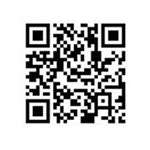 Jan. 5, 2011 – Smartphones, such as the iPhone, Droid, and Blackberry, have become an important tool for many lawyers. Smartphones allow legal professionals to access information from almost anywhere. These phones support endless applications geared towards the legal field and improving an attorney’s efficiency. As this technology becomes commonplace, we witness another trend – an increase in the use of matrix codes.
Jan. 5, 2011 – Smartphones, such as the iPhone, Droid, and Blackberry, have become an important tool for many lawyers. Smartphones allow legal professionals to access information from almost anywhere. These phones support endless applications geared towards the legal field and improving an attorney’s efficiency. As this technology becomes commonplace, we witness another trend – an increase in the use of matrix codes.
What is a matrix code?
A matrix code is basically a two dimensional bar code. Just like the bar codes we frequently see on library books or your favorite can of soup, matrix codes contain information. However, unlike these bar codes, a matrix code can contain a larger amount of alphanumeric text. The text contained within this type of bar code can range from a short message, to a phone number, to a website URL.
There are several types of matrix codes including Microsoft tags, blot codes, datamatrix, and QR (Quick Response) codes. It appears that QR codes are the most commonly used. Here is an example of a QR code.

Additional information about matrix codes is available online. NeoMedia offers a white paper entitled “2D Mobile Barcodes – A definitive guide,” which details the evolution and usage of these codes.
How do you access information in a matrix code?
It is very easy to access the information stored within a matrix code. A smartphone with a camera is all that is needed. Just launch the code reader application, scan the code with your phone’s camera, and you will be instantly connected to the information. Some newer smartphones come equipped with a code reader, if not, you can download a reader.
There are several QR code readers available for download. Many are free, but some require a nominal fee. One good option is the free NeoReader by NeoMedia. Check online articles that compare readers in order to make an informed decision. Two such articles are CNET’s “QR code readers for your iPhone” and Mobile-Barcode’s “QR-Code Readers.”
QR codes in action
A recent study by Burson-Marsteller indicates that 62 percent of Fortune 50 companies use some type of mobile communication. The study also found that 22 percent of these companies are using QR codes in such advertising media as magazines and billboards.
QR codes have great potential as a marketing tool. Various industries have implemented campaigns using matrix codes. For example, real estate companies are adding QR codes to signs or flyers for instant access to property information. Another example is Georgia-Pacific. They often place QR codes within magazine ads. The December issue of People magazine ran a Northern Tissue advertisement with a QR code.
A very creative example of using QR codes is the QR code scavenger hunt held in New York City. Participants scan QR codes to gather information to identify the next stop in the game. The winner of the hunt drives away with a Ford Fiesta.
I found several other fascinating uses of QR codes during my research. A restaurant in New Jersey includes these codes at each table. Diners scan the code and watch a video about menu items. My personal favorite is QRAPPING PAPER™, which is wrapping paper stamped with numerous QR codes. Each code on the wrapping paper is a link to humorous Christmas video.
Law firm and government examples
Lawyers have begun to embrace QR codes. Several attorneys are using QR codes on their business cards. The code often contains a link to the firm’s website. It is a great way for individuals to quickly gain information about their practice. Other firms, such as McKenzie & Snyder in Ohio, include the code on their website so that potential clients have contact information sent to their phones.
Municipalities are also using QR codes. The White House’s Open Government Initiative highlighted a city in Texas using QR codes to link residents to historical data, tourist guides, and town services. The State of California offers QR codes to access lottery numbers or the state’s website. Another innovative use is found in Kern County California. Their Environmental Health Department of Kern County posts QR codes in area restaurants with links to inspection reports.
Generating matrix codes is quite simple. There are several websites that provide the service for free. A few examples include INVX, Kaywa, and BeeTagg.
A Wisconsin initiative
The State of Wisconsin now is using matrix codes. Beginning with the new 2011 legislative session, proposed bills, amendments, and resolutions will display a matrix code. This technology will allow researchers to “scan the matrix code to display an associated Web page. If the proposal has been introduced, the matrix code will link to the bill status Web page.” A nice summary of the project is available in a National Conference of State Legislatures blog post.
Steve Miller, chief of the Legislative Reference Bureau, recently spoke to the Law Librarians of Wisconsin. At that meeting he indicated that eventually the matrix code will link to committee records, legal memoranda, lobbying information, and veto messages.
About the author
Bev Butula is the manager of library of services at Davis & Kuelthau, Milwaukee. She is a past president of the Law Librarians Association of Wisconsin. Butula has written articles and spoken to numerous groups on issues such as effective Internet research, evaluation of Web sites and legal research. Prior to obtaining her Master's Degree in Library Science from UWM, Butula was a litigation paralegal.
Previous articles:
